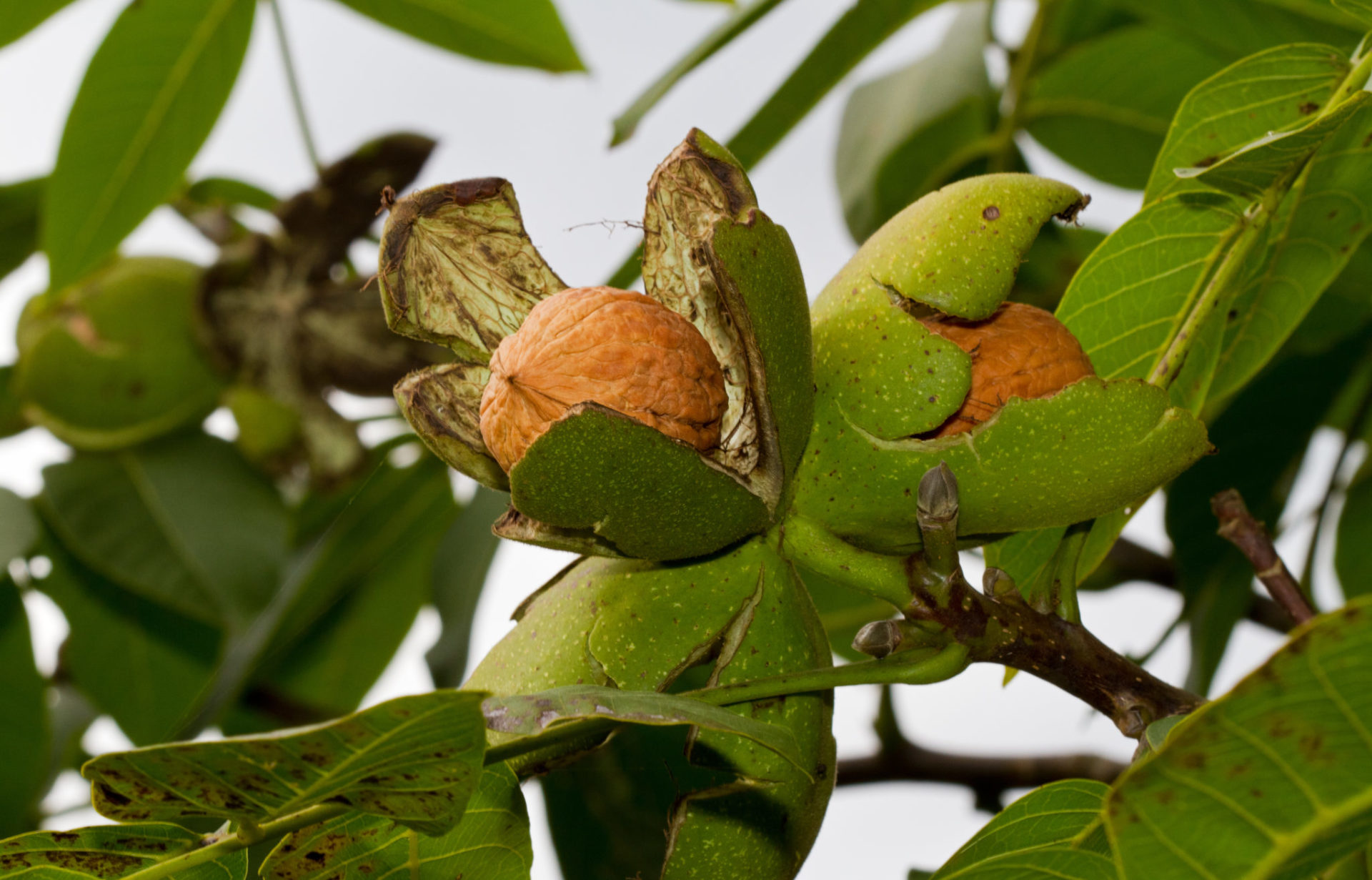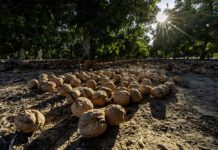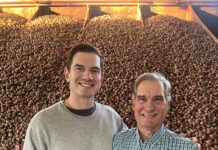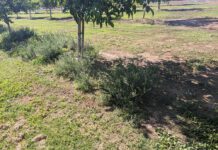Nestled around Mount Konocti and Cobb Mountain in Lake County, Calif., at an elevation of 1,300 to 2,500 feet, are acres of a walnut variety that once dominated the region. The Franquette walnut made its appearance in Northern California in the late 1800s, and found favor among growers because it had a well-sealed shell, a flavorful and very good quality, light kernel, and as one of the last varieties to flower, it was less susceptible to spring frost.
As more and more Franquettes were planted during the 1920s, 30s and 40s, and more after WWII, Dutch Lauenroth was already well underway in the Franquette walnut business.
“They pretty much planted the whole county; I don’t even know of anything else when these Franquettes were planted,” said his son Paul Lauenroth, owner of Lauenroth Trucking and Farming in Lake County.
Way back then, as Lauenroth fondly said, his father ran about 200 hand-pick-ers who picked thousands of sacks a day. Lauenroth himself grew up in the bustling world of Franquette walnuts, where loads went to a large receiving station at the north end of Napa Valley and railcars shipped them out.
“It was a big deal. If you got a ton to the acre, you were doing really well; you can’t really do that anymore. As time went on, it wasn’t profitable to hand-pick, so a lot of orchards went by the wayside.”
These orchards have more than just historical success; they also contain Native American cultural history and lore. There’s a story passed to Lauenroth from his father, who received it from his own father, about a Franquette orchard at a higher 4,000-foot elevation. Before the walnuts were planted, the natural clearing they now occupy once served as a space where native tribes built fires for their gods. From what Lauenroth understands, the orchard was planted around 1905, and is still picked today.
“And those walnuts are unbelievably beautiful. They don’t get a lot off of them, but they are beautiful walnuts,” he said.
Many of those orchards that became too expensive to harvest eventually went to the wildly successful Hartley and later Chandler, but remnants of abandoned Franquette orchards remain.
Lake County still has active organic Franquette growers, but now they are faced with another problem: finding a buyer for their walnuts.
Walnuts that used to go directly to large processors are now at a loss, with roughly 30 to 45 Franquette growers looking for a buyer for the few hundred acres among them.
Lauenroth makes note of how many abandoned walnut orchards already exist in Lake County. When land went for a few dollars per acre after WWII, people cleared it and planted Franquette, living out a good run for the variety until higher-yielding varieties took its place in not only Lake County but other parts of the state as well.
For the abandoned land that has since been purchased, much of it is being converted to grapes.
Lauenroth currently has Hartley, Chandler, Tulare and Franquette, with Durham on his list for the next section of new plantings. But he has a particular appreciation for Franquette. Even though his Chandler recovers quickly and has a beautiful nut, the taste can’t compete against other varieties. He’s very proud of the yield on his Tulare trees, and sees the Durham as a rising star. But nothing compares to the flavor of a Franquette.
“Unfortunately, people want quantity over quality. But anyone who has eaten a lot of walnuts will tell you that a Franquette is better tasting than [the others].”
There are a few reasons why the market has narrowed on this once-prized walnut variety. Since Franquettes flower later in the season, the nut set and yield can be low due to their missing other varieties’ pollen shed. (Scharsch strain Franquettes, however, are good pollinizers for Hartley and Chandler.) The crack out rate is about 41%, with a smaller sized kernel. And labor and drying can get pricey in a place where some orchards still require handpicking and depend on propane for heat to dry.
While Lauenroth personally won’t have any trees that aren’t machine-pickable, there are some areas that can’t accommodate machines for harvest.
“If you have to pay someone $10 a sack to pick them, then someone else 15 cents a pound to dry them, and then have to pay somebody else to haul them someplace to sell them, you’re better off leaving them on the ground,” said Lauenroth. “It’s sad.”
Franquettes aren’t the first variety to end up in the shadows of today’s popular varieties. Ashley, Eureka, Serr and others have experienced a similar fate.
“It’s primarily tonnage,” said Brad Bowen, fieldman/buyer for Mid Valley Nut Company. While taste used to be a determining factor, “Today people want something that looks pretty on a cookie or something they’re baking. I look at all varieties, and we have some we prefer over others, and we ac-knowledge other varieties in other forms. But, for cellophane bags, it always looks better when they’re in halves or large pieces and light-colored. They just seem to sell better to the consumer. So, I think it’s that and tonnage.”
These factors alone create an uphill battle for getting this variety to market. Combined with the coronavirus pandemic and its rapid and detrimental effects on the economy at large, let alone agriculture and food supply chains, Franquettes could easily become a victim of lost markets, if not processing bottlenecks.
“It could be a tough year,” said Lauenroth.
Could is the operative word. Lauenroth and his network of growers are taking steps to prevent that from happening.
“Grocery stores aren’t closed,” said Lauenroth. “Now people are going to go buy walnuts, and they’ll buy a 2-pound bag and sit at home and eat them. They won’t spoil, and they’re good for you.”
Lauenroth has his eyes set on the East Coast and the culinary professionals and potential working-from-home, end-consumer snackers that reside there.
Aside from these growers possibly starting their own cooperative and building the infrastructure needed to harvest, process, package and ship, Lauenroth plans to build a buying network at the New York Terminal Market. Famously known as Hunts Point, this terminal market’s annual revenue exceeds $2 billion and is the largest in the world. Ideally, Lauenroth would like to line up with a sales team on the East Coast.
“I think that’s where they’ll sell,” he said. “It’s probably impossible this year, since we don’t have the time. But if we don’t…well, either that or there will be a lot of people going out of the walnut business.”
















